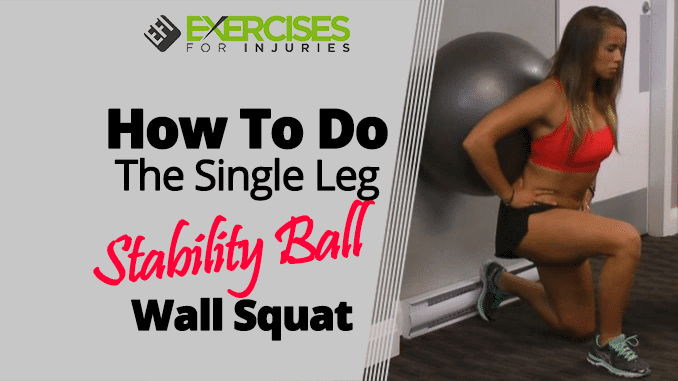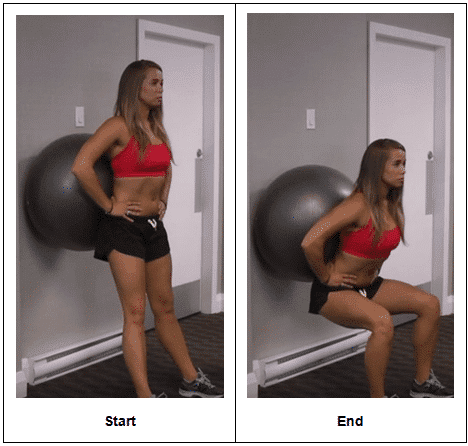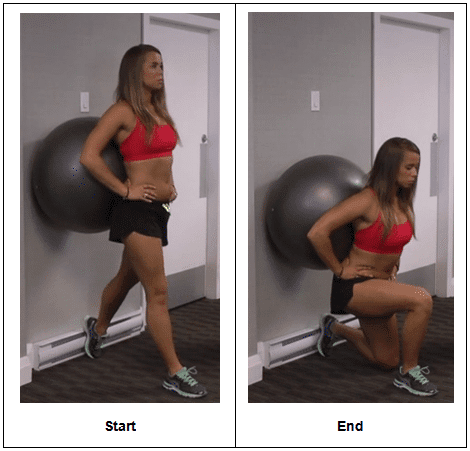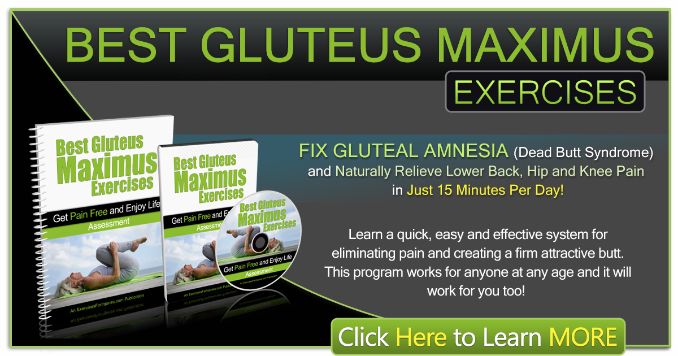
In this video, I will go through a great stability ball exercise that is excellent for helping rehab the hip and preventing hip injuries. We are working on improving the hip stability by slightly tweaking the traditional stability ball wall squat.
CLICK HERE to watch the YouTube video.
Traditional Stability Ball Wall Squat
I had Alix demonstrate.
Traditional Stability Ball Wall Squat
With the traditional stability ball wall squat, you place the stability ball between the wall and your lower back/pelvis area. You can put your hands on your hips to help provide balance. Bring your feet slightly out front and hip-width apart. Squat down and raise back up using ankle, knee, and hip movements. Aim to keep your knees behind your toes. This is the traditional stability ball wall squat.
Single Leg Stability Ball Wall Squat
Make this exercise more challenging by doing a Single Leg Stability Ball Wall Squat. It challenges the whole leg and hip, working on the stability in the hip and also really working on strengthening the muscles around the hip, especially the glutes and the hamstrings.
Single Leg Stability Ball Wall Squat
You must bring your foot to the midline, not right underneath the hip, and bring back the opposite leg. Start with the toe touching, with all your weight on that foot. With that toe touching, we have taken away balance so we can focus on the movement of that single leg. You might have more weight on the heel to engage the hamstrings and glutes. We can focus on challenging those muscles while being easy on the joints. So we are working on the quads and feeling a lot more in the hip, the glutes, and then the hamstrings.
Everything else is the same, so we are getting movement in the hip, we are getting movement in the knee, we are getting movement in the ankle, and the torso is coming forward. Still, she has great alignment regarding the head, shoulders, mid back, low back, and hip.
This will challenge the hips to help improve hip stability if you have a previous injury. This is a great exercise to help prevent a future hip injury. So give that a go, tweak the traditional stability ball wall squat and give the single leg stability ball wall squats a go.
Final Word
Make sure to swing by ExercisesForInjuries.com. Enter in your injury or pain. There’s a good chance that there’s an article, an interview, or a video to help you overcome your injury or pain.
Secondly, if you’re watching this on YouTube, head up above and hit subscribe. When you subscribe, you’ll get a video like this every couple of days where I talk about tips and tricks on overcoming injury or pain.
Thirdly, head down below, hit like, and leave me a question or a comment.
Take care!
Rick Kaselj, MS
If you are looking for a more comprehensive resource to overcome your back and lower body injuries quickly, securely, and effectively, then click here to check out the Best Gluteus Medius Exercises program.



